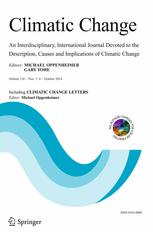
Contributors to the frequency of intense climate disasters in Asia-Pacific countries
With Thomas and Albert, Climatic Change, 126, 381-398, 2014
Keywords: asia / Change / climate / economics / environment / gas / greenhouse / natural disasters / nature / sustainability / weather
The frequency of intense natural disasters (defined here as events triggered by hazards of nature and causing at least 100 deaths or affecting the survival needs of at least 1,000 people) has been on the rise over the past 40 years. This is especially true for Asia and the Pacific, where such disasters have long been relatively frequent. A crucial question is the extent to which the frequency of such disasters is related to increases in the number of people exposed to hazards, changes in people’s vulnerability to hazards, and temperature and precipitation anomalies. This paper addresses this question with an econometric analysis of disaster risk determination for countries of Asia and the Pacific during 1971–2010. The objective is to determine the role (if any) of greater likelihood of climate-related natural hazards, alongside changes in exposure of people to the hazards and their greater vulnerability, in explaining the annual frequency of climate-related disasters. Results indicate that hydrometeorological disasters are strongly associated with rising population exposure as well as precipitation anomalies, while climatological disasters are strongly associated with changing temperatures. Taken together with the evidence from literature that it is “very likely” that the rising incidence of greenhouse gas emissions in the atmosphere is altering the climate system, the findings suggest a connection between the frequency of intense natural disasters observed in the region and man-made climate change.